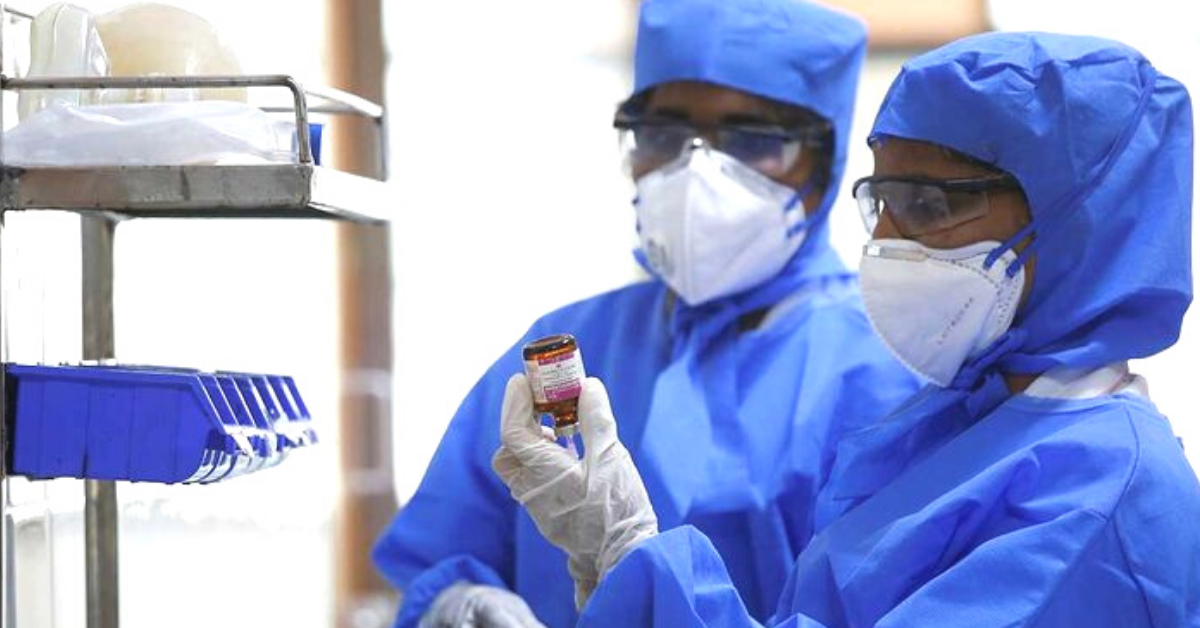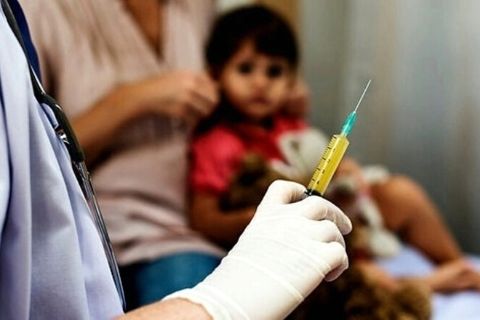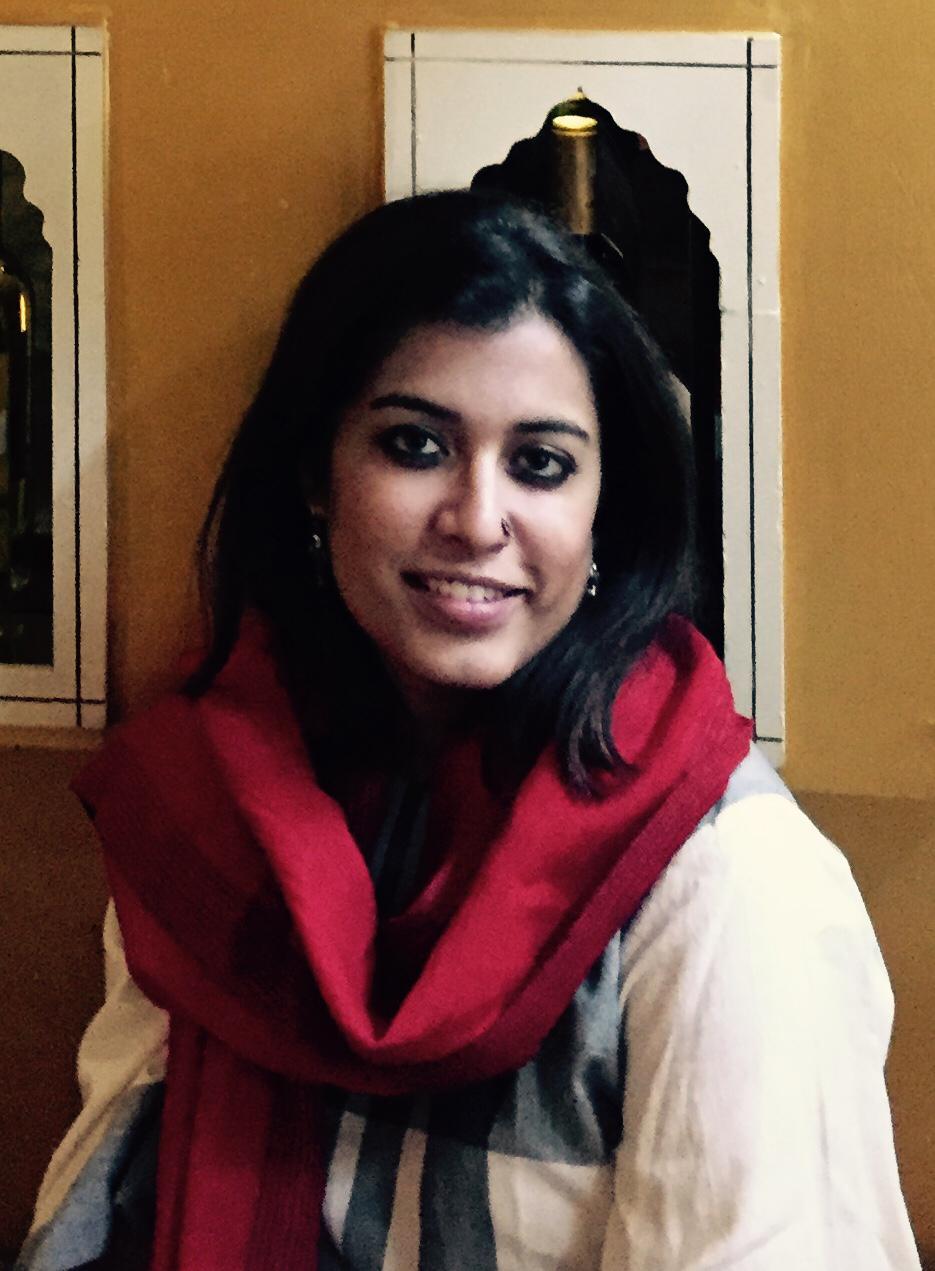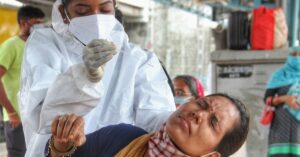Who Will Get The COVID-19 Vaccination First? Here’s What India Is Planning
Once the COVID vaccine is developed, countries like India need to plan on who will get access to it first. The frontline health workers, those with co-morbidities, the economically backward section, or a completely different set?

At the time of writing this story, there are approximately 7 million active COVID-19 cases in the world, with 4.2 million in India alone, and the one thing that the human race collectively is hoping comes through sooner rather than later is a vaccine.
In the event that one is developed, questions were being asked as to how it would be distributed in a fair and equitable manner, and several countries brought together health experts to deliberate and find solutions.
Consequently, a three phase plan for vaccine distribution, called the ‘Fair Priority Model’ has been developed by a team of nineteen global health experts. What this model aims to do is create a methodology, which reduces premature deaths and other irreversible health concerns arising out of COVID-19.
What is the Fair Priority Model?

The model works on three levels – to benefit people and limit harm cause by the virus, prioritising countries already disadvantaged by poverty or low life expectancy, and avoiding discrimination.
Phase 1 of the model focuses on curtailing the premature deaths arising from COVID-19. This is determined by calculating “standard expected years of life lost,” which is a commonly used global health metric. In the next phase, the overall economic improvement and the extent to which people would be spared from poverty upon receiving this vaccine will be taken into consideration and the last phase will focus on countries with higher transmission rates.
World Health Organisation (WHO) model
There is also a plan developed by the WHO, which by contrast, begins with 3 per cent of each country’s population receiving vaccines, and continues with population-proportional allocation until every country has vaccinated 20 percent of its citizens.
In June 2020, WHO had said that healthcare workers should be given priority first followed by adults older than 65 and those having comorbidities such as cardiovascular disease, cancer, diabetes, obesity, or chronic respiratory disease.
India’s stand

India is still developing its vaccine distribution strategy. While it stands united in saying that the frontline health workers directly interacting with COVID-19 patients will be the first recipients of the vaccine, there seems to be no clarity on who will come next.
In India, at least seven Indian pharmaceutical companies are working to develop a vaccine and two have progressed to human trials, according to this report.
Dr VK Paul, member of NITI Aayog, is heading the expert group committee tasked with building an India focused strategy. According to a report issued by the Government, “They discussed broad parameters guiding the selection of COVID-19 vaccine candidates for the country and sought inputs from Standing Technical Sub-Committee of National Technical Advisory Group on Immunization (NTAGI).”
E Sreekumar, chief scientific officer at the Rajiv Gandhi Centre for Biotechnology, in this report said, when the COVID-19 vaccine will be ready, there’s a possibility that the Centre may conduct a seroprevalence study to understand the prevalence of infection among the country’s population. The seroprevalence data may help to weed out people from having COVID-19 vaccine shots who have already developed antibodies against the virus.
Seroprevalence surveys use serology tests to identify people in a population or community that have antibodies against an infectious disease.
Given the vast population of India and complex social, economic, and humanitarian contexts of India, it is necessary to develop a model that is customised for ensuring effective distribution.
India has past experience with vaccinating large populations and eradicating diseases such as small-pox and polio. This experience will come in handy while developing an India specific COVID vaccine strategy.
Weighing in on this issue, Dr Sukriti Chauhan, an INLAKS scholar and a lawyer with a Masters in International Development Law and Human Rights with a decade of advocacy and communications expertise in public health and human rights says, ““I stand by the Fair Priority Model because the high risk population, which includes the frontline health workers and those above 65 years of age, must be focused on.”
“All this is assuming that a vaccine is developed soon enough and that the WHO approves of it,” adds Dr Chauhan.

Having worked with HIV/AIDS survivors, Dr Chauhan also adds, “if a vaccine to prevent HIV were to be made available, shouldn’t it be administered to those who fall under the high-risk category first?”
How much will the vaccine cost?
In India, the cost of producing drugs and vaccines is relatively cheaper because of the availability of labour and also large scale manufacturing facilities. This report says, a rotavirus vaccine by Indian pharma giant Bharat Biotech, for example, cost one-fifteenth as much as rotavirus vaccines developed outside of India.
Developing a vaccine that is prohibitively expensive will defeat the entire purpose. According to reports, India’s Serum Institute said it will price the shot at $3 (approximately Rs 221) per dose for the country and other emerging economies.
In conclusion, Dr Chauhan says, “None of us are safe until we all are – but the vaccine dissemination will have to be done in a staggered manner. Protecting those at a high risk ought to be our first priority.”
(Edited by Vinayak Hedge)
If you found our stories insightful, informative, or even just enjoyable, we invite you to consider making a voluntary payment to support the work we do at The Better India. Your contribution helps us continue producing quality content that educates, inspires, and drives positive change.
Choose one of the payment options below for your contribution-
By paying for the stories you value, you directly contribute to sustaining our efforts focused on making a difference in the world. Together, let's ensure that impactful stories continue to be told and shared, enriching lives and communities alike.
Thank you for your support. Here are some frequently asked questions you might find helpful to know why you are contributing?


This story made me
-
97
-
121
-
89
-
167














